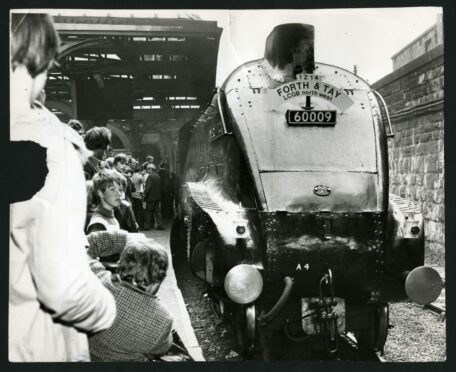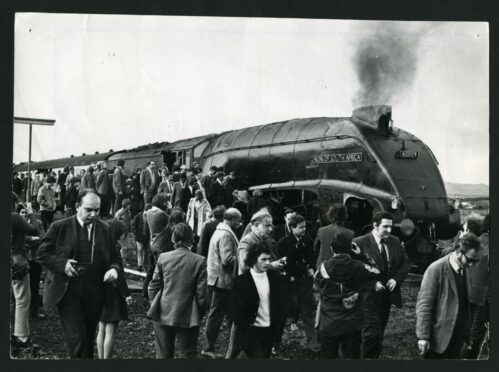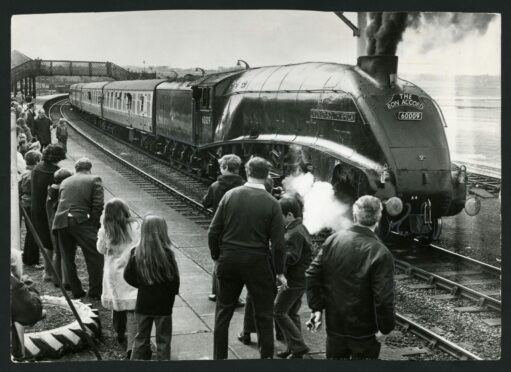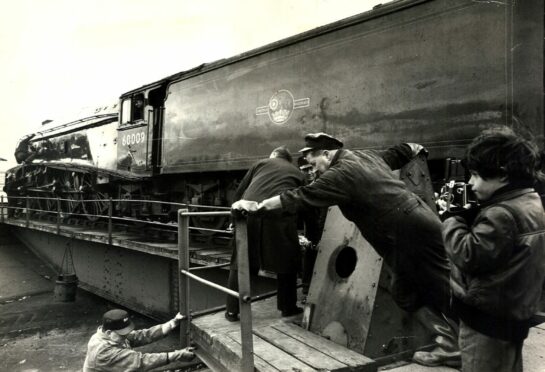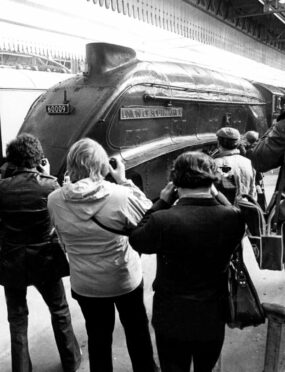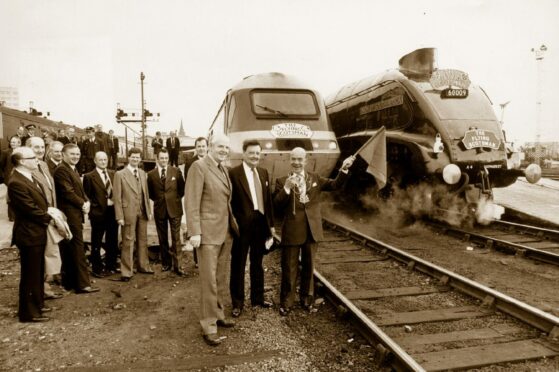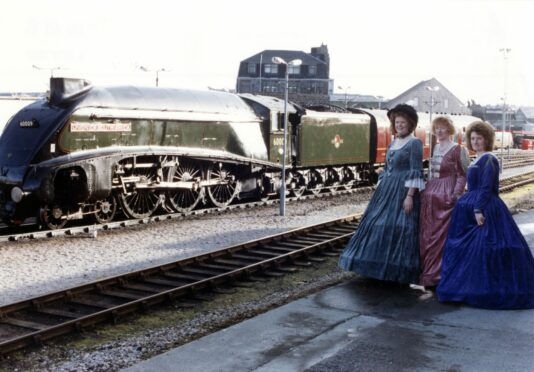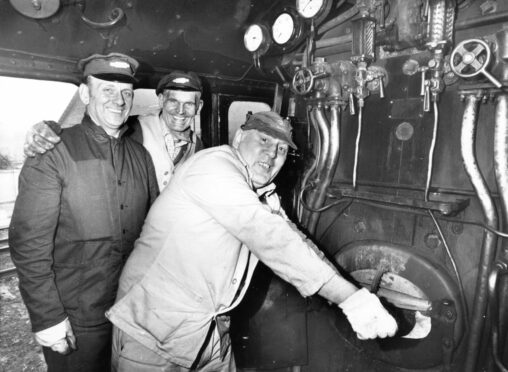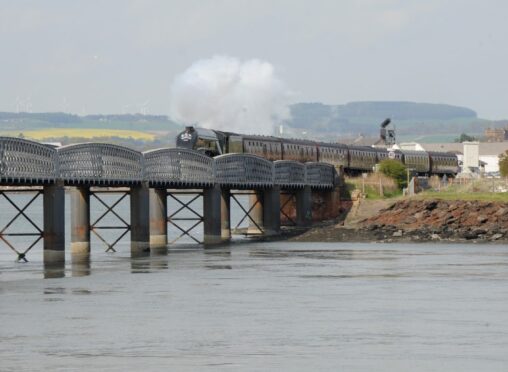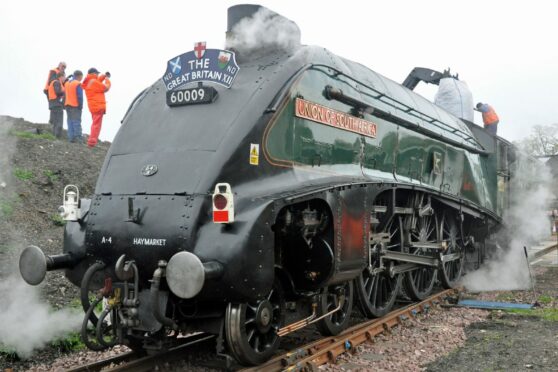A beloved steam locomotive with links to Aberdeen and Fife has been forced into early retirement after a leak was discovered in its boiler.
The striking Union of South Africa 60009 has brought the magic of the bygone era of steam to life on railways across Britain in recent years.
Wherever it went, people would line railway cuttings and platforms to catch a glimpse of the gallant, green steam machine passing by.
But the engine has been stopped in its tracks due to a boiler issue – just months shy of its 85th anniversary and scheduled retirement in 2022.
Number 9, a Class A4 steam locomotive, was built by the London and North Eastern Railway at the Doncaster Works in 1937.
Initially given the name Osprey, it was renamed after the new Union of South Africa – the predecessor of the present-day Republic of South Africa.
It started off its long and distinguished working life in blue livery, not green, at Haymarket in Edinburgh.
During the Second World War, Number 9 was painted black and the ‘L’ and ‘R’ were removed from LNER to thwart potential German spies.
Number 9 underwent another change after the war when the livery was returned to its handsome hue of ‘garter blue’.
Around this time, the loco was renumbered, firstly during the LNER renumbering scheme, and later after the nationalisation of British Rail.
In the 1950s, Number 9 was painted in British Railways green, a colour that stuck for the rest of its working life and beyond.
In May 1962, the loco moved north from Haymarket and was stationed at Aberdeen’s Ferryhill depot.
After its shed transfer to Aberdeen, number 9 worked the express service to Glasgow and was the last booked steam-hauled train from King’s Cross in London in 1964.
Like many other steam engines in the Beeching era, it was withdrawn from service in June 1966 – but escaped the scrapheap.
Instead, Number 9 was thrown a lifeline the following month when Fife farmer John Cameron, a railway enthusiast, purchased it.
Mr Cameron ran the loco on the Lochty Private Railway, a 1.5-mile stretch of the former East Fife Central Railway that he had reinstated especially for Number 9.
And from 1967, people could enjoy footplate rides and, with the addition of a carriage, short trips on the locomotive.
The loco left Lochty by road in 1973 when it was transported and returned to the mainline network, based at Kirkcaldy then Markinch.
Number 9 began a new life on the tracks as the only steam engine regularly running on the mainline in Scotland.
Operating as part of rail tours, it would sometimes return to Aberdeen in passing, much to the delight of trainspotters.
A triumphant return to the Granite City at Easter 1979 saw crowds of day-trippers throng around the popular locomotive.
There was a name change again in the 1980s and 90s when the Union of South Africa reverted to being called Osprey.
The move to rename the engine was part of a wider movement condemning and rejecting South Africa which had adopted a controversial policy of racial apartheid.
The Union of South Africa name was later reinstated.
Following a refurbishment in 1989, Number 9 began operating right across Britain – from the coastal cities in the south of England to the Highlands of Scotland in the north.
The loco stayed in Scotland until 1994 when it departed, by road, to the Severn Valley Railway.
In the 2000s it operated the Scarborough Spa Express and continued to work as part of the Railway Touring Company.
In 2010, its 73rd year, Number 9 underwent boiler work and extensive restoration at workshops in Crewe owned by Pete Waterman.
It would be another two years before the loco returned to the rails.
But its services were called upon in 2015 for a very special engagement – to pull a train carrying the Queen, Prince Philip and First Minster Nicola Sturgeon to mark the reopening of the Borders Railway.
The end of the track approached for Number 9 in 2017 when Mr Cameron announced the loco would be withdrawn when its boiler ticket expired.
However, a 12-month extension was granted in 2019 and it pulled its last charter in March 2020 before being housed at the National Rail Museum during lockdown.
Number 9 re-entered service in April this year in Lancashire with the intention it would continue operating here until its retirement in April 2022 when its boiler ticket was due to expire.
But it was announced this week that a leak was discovered in Number 9 that is “not viable to repair” due to its position and the short time the loco had left to run.
It has already been removed from service, with operators describing the move as “the end of an era”.
In a statement online, the operators said: “This is a very sad day indeed for the support crew and all who love this locomotive, the end of an era.
“We would like to take this opportunity to thank past support crew members, all the loco crews, the passengers who travelled with us and those waving from the lineside, the rail tour operators, and the heritage railways and centres that Number 9 visited, either as a visiting loco, for servicing, repairs, or overhaul.
“The popularity of Number 9 was always evident to see, and it was always great to see the pleasure it brought to people, young and old, and as for the support crew, we have had a ball.”
See more like this:
